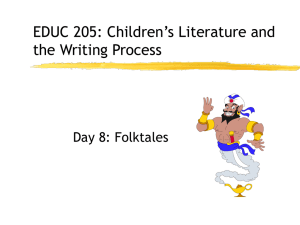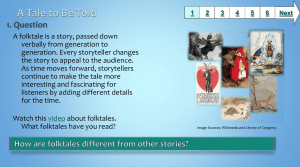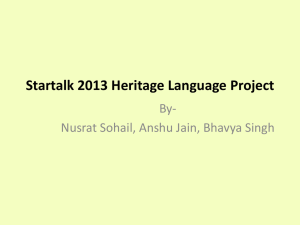File
advertisement
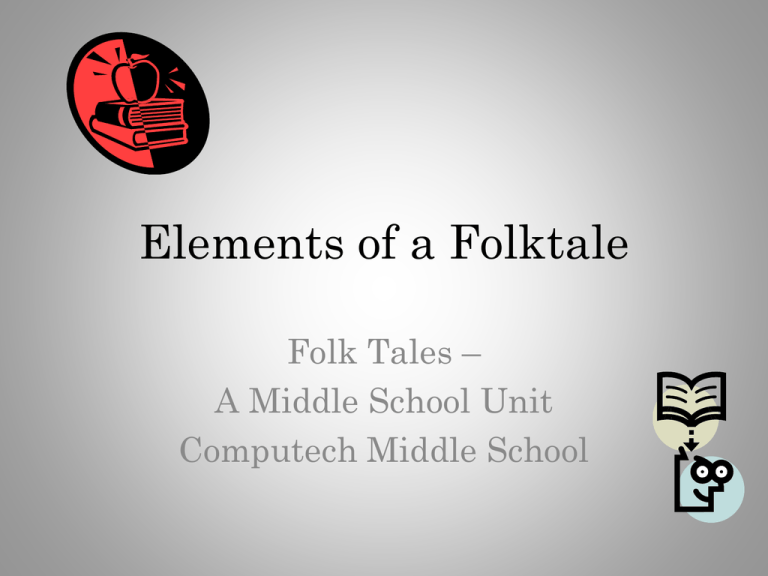
Elements of a Folktale Folk Tales – A Middle School Unit Computech Middle School What is a Folktale? • Folktales were the oral tradition of adults • They were passed down from generation to generation by word of mouth • They are stories about peoples’ lives and imaginations as they struggled with their fears and anxieties about the world around them • Folktales were made up to explain the wonders of the world Different Types of Folktales • • • • Trickster Tales Fables Pourquoi (por-qwa’) stories Fairytales Trickster Tales • One character, usually the protagonist, is clever and devious • The protagonist causes problem for other characters • He or she usually goes unpunished • Example Trickster Characters: Anansi the Spider (Africa), Hare (North America), Wolf (Europe), Badger (Japan) Fables • Usually considered short stories that teach a lesson or have a moral • The main characters in Fables are usually animals with human characteristics • Themes are evident, such as cooperation or a different perspective of the same problem • The moral is never stated, but needs to be inferred by the reader • Examples of Fables: Tortoise and the Hare; Town Mouse and Country Mouse Pourquoi Stories • Explains WHY something is as it is • Explains HOW something is as it is Examples of Pourquoi stories: Why Mosquitos Buzz in People’s Ears; The Story of Lightning and Thunder Fairytales • • • • • Include good and bad characters Usually has a hero or heroine Has magic Often begins with “Once upon a time….” Conflicts are resolved through kindness, courage, or intelligence Common Elements of a Folktale Characterization • Characters are usually flat, meaning that they are uncomplicated and only change in their mindset (from the lesson learned) throughout the course of the story • The hero is usually young, fair, kind, charitable, honorable, courageous, unselfish, and my possess some sort of magical power Common Elements of a Folktale Setting • Place is usually described easily and briefly, leaving the imagination to fill in the gaps. For example, folktales take place in a cottage in the woods or in a magical kingdom that fits the typical geography of the culture • Time is a fantasy time, such as Once upon a time, or A long time ago and may be imbedded within the history of the culture. Common Elements of a Folktale Plot • Folktales are full of action, and typically follow a basic plotline of events that usually starts quickly to grab the readers’ attention • Thought-provoking and possibly meant to teach a lesson • Conflicts are usually resolved with great deeds or acts of human kindness related to good and evil Common Elements of a Folktale Style and Tone • Descriptions are quick and to the point, creating strong images without a lot of language • Often there are promises made or promises broken • The number three is used in a lot of folklore • Magic is commonly used to explain the unexplainable • Sometimes folktales have repeated phrases • Folktales explain a natural phenomenon that would otherwise have no explanation Common Elements of a Folktale Theme • Fear of not being loved • Fear of leaving home • Good and Evil • Right and Wrong • Happiness, Kindness, Friendship, Loyalty…. »…continued on next slide Common Elements of a Folktale Theme…continued • • • • • • Problems of young adults Security Fear of not having children Justice and injustice Discuss basic values of people Reflect basic values and concerns of different cultures Student Task • With a partner or in a group of three, go back over at least three of the folktales you have read. Read them together, and locate the elements of the folktales that are evident in your selections. • Be ready to share your work with the class. Folktales • A Story Inside a Story Inside a Story • Kinto and the Law of Love • Anansi: How the Spider Got a Skinny Waist • Arap Sang and the Cranes • Kelfala’s Secret Something • Sundiata the Lion King of Mali
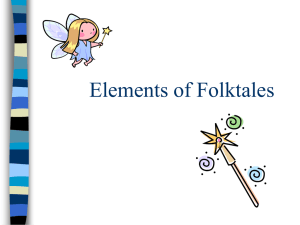
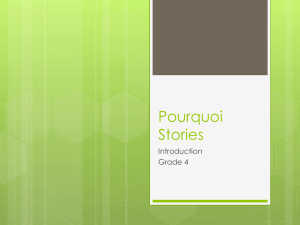

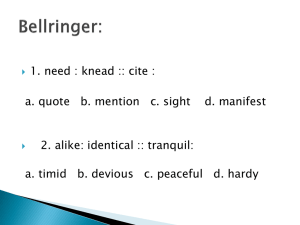
![Essay #4: [4 Short essays will substitute Essay 4]](http://s3.studylib.net/store/data/007737676_2-779981057889e025637152af438b827f-300x300.png)
